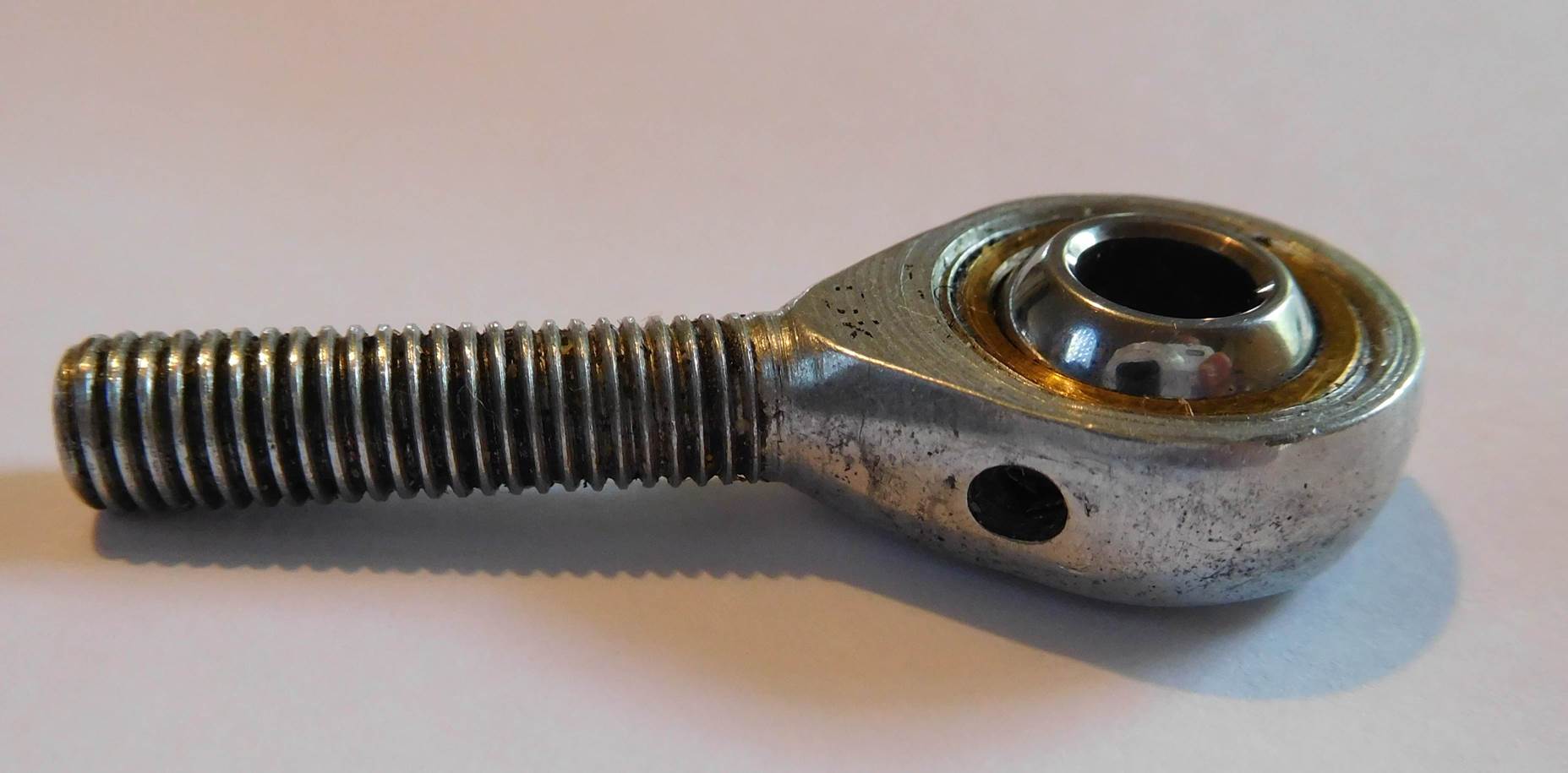When I built my Sonex I decided to use spherical bearing rod ends on all control rods. I opted to use industrial rod ends rather than the special aeronautical types (OK, I’m a cheapskate), but went up on size, so all the rod ends are either 1/4″ or 5/16″. All the rod ends in the elevator linkage are 5/16″ except for the rearmost one which is 1/4″ and probably more heavily loaded than the other bearings, so during the 200 hour service I decided to change that one for a more expensive, and hopefully stronger type. I had always intended to test one of the original rod ends to destruction, so here was a good opportunity. I made a couple of simple attachments so that load could be applied using an overhead crane via a calibrated load cell and a 1 tonne sling (should be plenty big enough, I thought). The rod end survived a load of 1050 kg at which time I thought I better not overload the sling. Here’s the rod end after the test.
It has started yielding. The small hole is for a grease nipple. You can see it is now oval and the steel each side is waisted slightly. It would have failed at a bit higher load, but not much. The apparent damage to the thread is an illusion from the photograph – the thread was in good condition. Obviously a rod end without the grease nipple would be considerably stronger.
The new rod end is an Aurora GMM-4M-470 which is described as “General Aviation – Precision”.
The tested bearing compared with published values for ultimate static load capacities:
VM4G – tested 2350 pounds – not ultimate
Aurora SPM-4 (economy industrial) 2470 pounds
Aurora SPM-5 (economy industrial) 2740 pounds
GMM-4M-470 (general aviation) 2158 pounds
It would appear that Aurora are more conservative with their ratings for the aviation bearings. The GMM-4M-470 also has a rolled thread which should be better for fatigue life. The VM4G appeared to have a cut thread. I guess one tested sample is not exactly exhaustive testing but I was reasonably happy with the test result, and felt more confident in the strength of the other bearings.